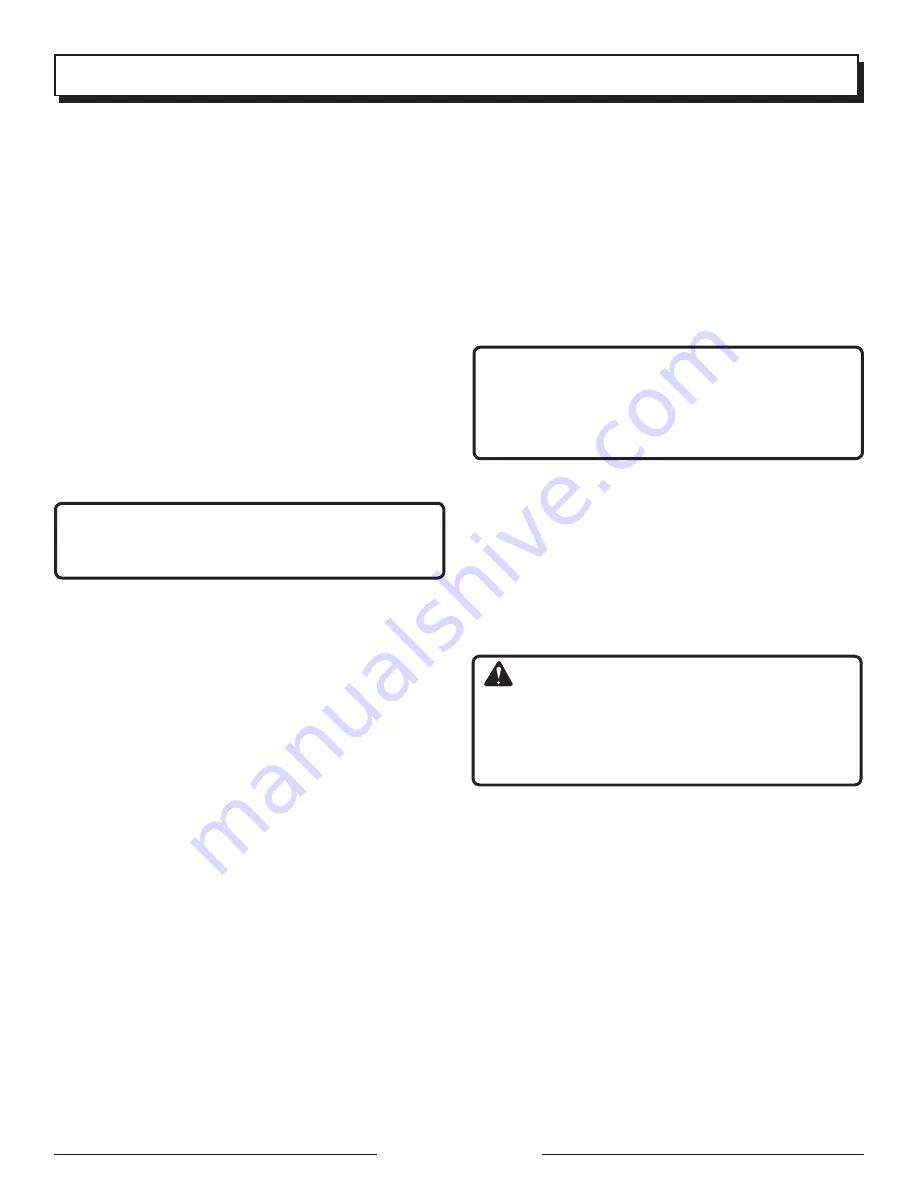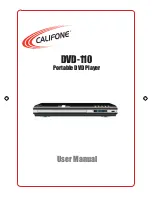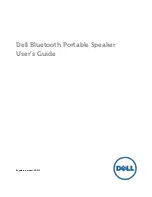
Page 14 — English
BEFORE OPERATING THE UNIT
Only use OUTSIDE and far away from windows, doors,
and vents.
NEVER use inside a home or garage, EVEN IF doors and
windows are open.
Always position the generator on a flat firm surface.
SPECIAL REQUIREMENTS:
There may be General or State Occupational Safety and
Health Administration (OSHA) regulations, local codes or
ordinances that apply to the intended use of the generator.
Please consult a qualified electrician, electrical inspector, or
the local agency having jurisdiction:
In some areas, generators are required to be registered
with local utility companies.
If the generator is used at a construction site, there may
be additional regulations which must be observed.
CHECKING/ADDING LUBRICANT
See Figure 10.
NOTICE:
Attempting to start the engine before it has been properly
filled with lubricant will result in equipment failure.
Engine lubricant has a major influence on engine perfor-
mance and service life. For general, all-temperature use,
SAE 10W-30 is recommended. Always use a 4-stroke motor
lubricant that meets or exceeds the requirements for API
service classification SJ.
NOTE:
Non-detergent or 2-stroke engine lubricants will
damage the engine and should not be used.
Unscrew the oil cap/dipstick and remove.
Wipe dipstick clean and re-seat in hole; do not re-thread.
Remove dipstick again and check lubricant level. Lubri-
cant level should fall between the hatched areas on the
dipstick.
If level is low, add engine lubricant until the fluid level rises
to the upper portion of the dipstick.
Replace and secure the oil cap/dipstick.
USING FUEL STABILIZER
Fuel gets old, oxidizes, and breaks down over time. Adding
a fuel stabilizer (not included) extends the usable life of fuel
and helps prevent deposits from forming that can clog the
fuel system. Follow fuel stabilizer manufacturer’s directions
for correct ratio of stabilizer to fuel.
Mix fuel stabilizer and gasoline prior to filling the tank
by using a gas can or other approved fuel container and
shaking gently to combine.
NOTE:
To control the amount of fuel stabilizer being added
to the engine, always mix fuel stabilizer with gasoline
before fueling the tank rather than adding fuel stabilizer
directly into the generator’s fuel tank.
Replace and secure the fuel tank cap.
Start and run the engine for at least 5 minutes to allow
stabilizer to treat the entire fuel system.
OXYGENATED FUELS
NOTICE:
Do not use E15 or E85 fuel (or fuel containing greater
than 10% ethanol) in this product. It is a violation of
federal law and will damage the unit and void your
warranty.
Fuel system damage or performance problems resulting
from the use of an oxygenated fuel containing more than
the percentage of oxygenates stated below
are not covered
under warranty.
Ethanol.
Gasoline containing up to 10% ethanol by volume
(commonly referred to as E10) is acceptable.
E15 and E85
are not.
CHECKING/ADDING FUEL
See Figure 11.
WARNING:
Gasoline and its vapors are highly flammable and ex-
plosive. To prevent serious personal injury and property
damage, handle gasoline with care. Keep away from igni-
tion sources, handle outdoors only, do not smoke while
adding fuel, and wipe up spills immediately.
When adding gas to the generator, make sure the unit is
sitting on a flat, level surface. If the engine is hot, let the
generator cool before adding gas. ALWAYS fill the fuel tank
outdoors with the machine turned off.
Remove the fuel cap.
Fill the fuel tank to 1 in. below the top of the fuel neck.
Replace and secure the fuel cap.
NOTE
: Always use unleaded gasoline with a pump octane
rating of 86 or higher. Never use old, stale, or contaminated
gasoline, and do not use an oil/gas mixture. Do not allow dirt
or water into the fuel tank.
Do not use E85 fuel.
OPERATION
Содержание PS907000
Страница 46: ...Page Pàgina 22 NOTES NOTAS ...
















































